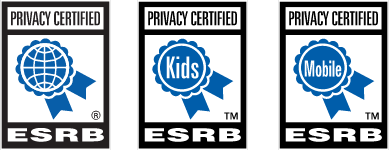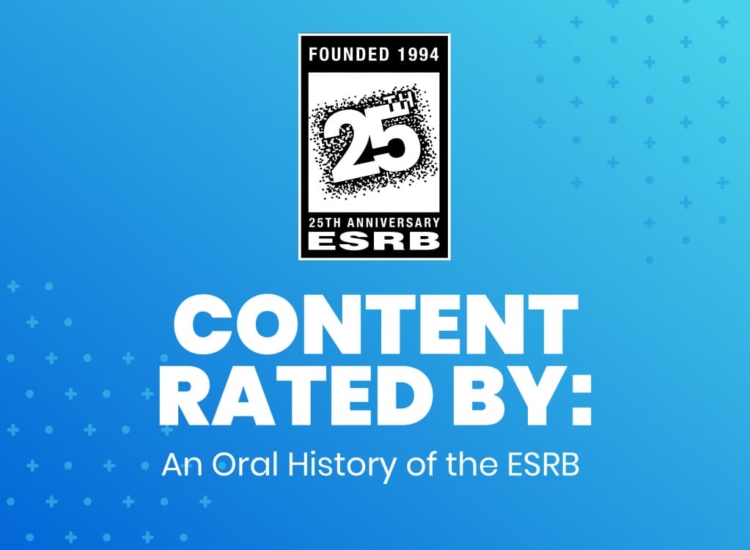Part 5: Pat Vance: Doing Something Good…
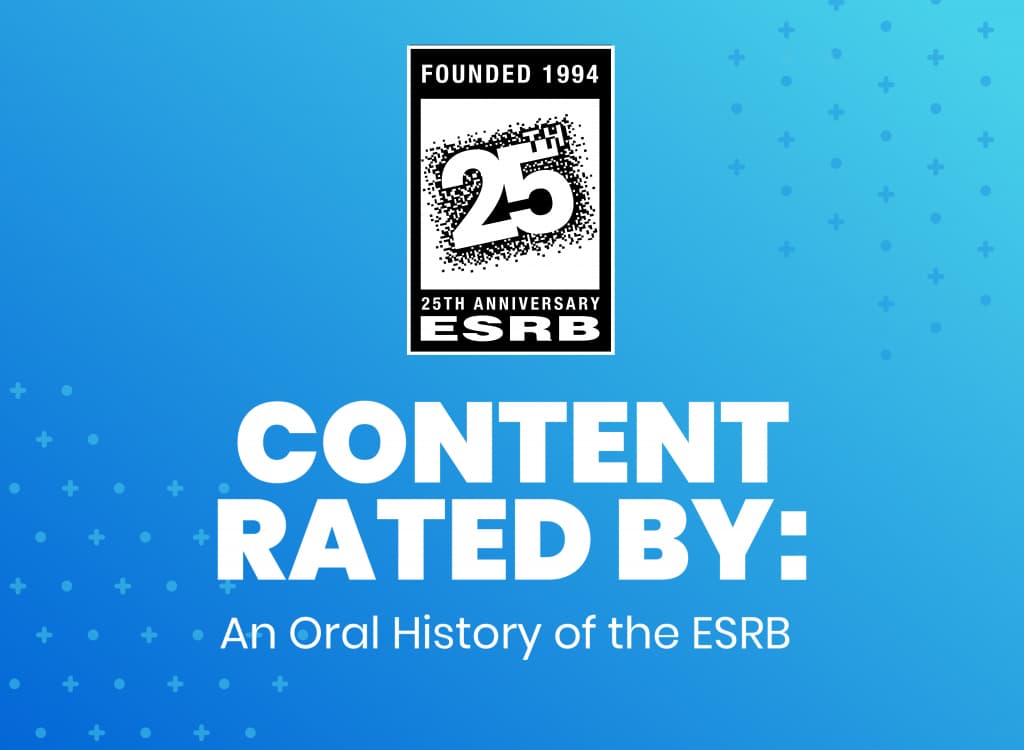
To help commemorate its 25th anniversary, the Entertainment Software Rating Board (ESRB) reached out to Blake J. Harris, the best-selling author of Console Wars: Sega, Nintendo, and the Battle That Defined a Generation and The History of the Future: Oculus, Facebook and the Revolution That Swept Virtual Reality to document the behind-the-scenes origins of the rating system for video games and how it has evolved over the past quarter century. Content Rated By: An Oral History of the ESRB provides eyewitness accounts from the key people involved in the ESRB’s creation and its development into one of the country’s finest examples of industry self-regulation.
Part 5: Pat Vance: Doing Something Good…
PAT VANCE (ESRB): I’ll tell you what I wanted to be when I was in college: the first female U.S. ambassador to the Soviet Union.
With this in mind, Vance moved to D.C. and began doing non-profit political work.
PAT VANCE (ESRB): I was fascinated by the Cold War and U.S./Soviet relations. But then the Soviet Union invaded Afghanistan and I realized that trying to educate the American public about the nuclear arms race was probably, you know, like beating your head against the wall. And with [President-elect] Reagan coming into office, and the SALT II treaty stalled in Congress…I just said: you know what? It’s time for me to try and do something else.
That “something else” involved moving to New York to break into the media world.
PAT VANCE (ESRB): My first real job in media was in the early days of cable TV, at The Movie Channel (TMC). That was great fun. I was manager of movie acquisition planning, trying to figure out how to block HBO from getting exclusives. That sort of stuff. After a couple of years at TMC, I moved to ABC to develop new markets for its brands and programming. My first market was in-flight entertainment. At that time, airlines were slowly but surely converting the movie equipment on their fleets from 8mm film to video cassettes, opening up opportunities for us to get our news and sports programming on airlines. My first big deal was with United Airlines to deliver highlights of the 1984 Olympics in Los Angeles every day on video cassettes to their major hubs around the country. Yup, that’s right—video cassettes! That was the year that the Soviet Union boycotted the games, so the U.S. was winning medals left and right. Flight attendants would stop what they were doing to watch the video! We used satellites to send the 20-30 minute highlight package produced after the close of each day’s events to video duplication houses on the ground—back then there weren’t direct satellite feeds to planes like today!
Another market that was going through a similar film-to-video transformation was the educational business. I was asked to take on ABC’s Wide World of Learning, the company’s educational division, which up to then had been distributing 16mm films to the school market—programs like ABC Afterschool Specials, Schoolhouse Rock and various news documentaries. Once the VCR hit, that business just exploded and also resulted in our development of an on-air direct response video business.
Getting used to dealing with market disruptions, Vance leaned into the technological shift. And soon enough found herself at the forefront of ABC’s efforts in the interactive media space.
PAT VANCE (ESRB): In the nineties, there was a lot of experimentation going on—and I began to spend a lot of time trying to figure out how to leverage linear content and make it interactive. We started producing interactive CD-ROMs and laser discs for the educational markets and then turned our focus on the consumer market. But we quickly realized that we needed partners who had expertise that we didn’t, and so, established two joint venture companies to produce interactive entertainment with us. The first was a joint venture with Electronic Arts [called “Creative Wonders”], which developed and published CD-ROM titles for children featuring amazing brands like Sesame Street, Schoolhouse Rock, Madeline and others. We also created a joint venture [called “OT Sports”] with Spectrum HoloByte, spinning out their Ultimate Football dev team to produce a line of ABC Sports branded video games, leading with ABC Sports Monday Night Football, followed by ABC Sports College Football and Indy Racing.
Not only was ABC Sports Monday Night Football—released in 1996—a successful game, but it was also the first PC sports game to feature online competition.
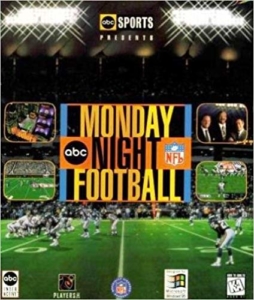
ABCNews.com eventually came under Vance’s umbrella too, with over 200 people in multiple locations across the country reporting to her as head of the ABC Internet Group.
PAT VANCE (ESRB): Those were tough days wrought with big struggles internally. A lot of people at the network thought that the things we were doing on the Internet would be taking away viewers from TV. It was seen as a “competitive screen.” So, it took a really long time to get the TV folks to embrace the Internet and really understand how they could leverage it to further engage their audience. But there were a few TV people that embraced it early on—like the producers of The Drew Carey Show. We did some of the most remarkable stuff with the Drew Carey team who wanted to be fore-runners and do things that had never been done before. One crazy thing we did in 1999 was webcast an alternate “Drew Cam” show on the internet simultaneous with the live broadcast of the “real” show on TV. We had to literally aggregate all the excess bandwidth across the U.S. to support this stream! Something like 650,000 viewers tuned in online. We were nuts in those days!
DOUG LOWENSTEIN (ESA): So, like I said earlier, it was a really tricky search after Dr. Pober left— finding the right successor to run the ESRB. But then we came across Pat’s resume and, well, she checked a lot of boxes. She had worked in the educational space; she had been a senior executive at media companies and at every stop throughout her career she had shown a real entrepreneurial spirit.
PAT VANCE (ESRB): I was intrigued by the position at the ESRB. Especially because, at that point in my career, I was looking to leverage my experience in the private sector, but do something “good” with it. And this was definitely something good. In addition to being in the center of the game business, which I love, it also had a public service component to it. And that really appealed to me.
DOUG LOWENSTEIN (ESA): And then when I first met her, I was immediately impressed. It was clear that she was smart, tough, no-nonsense, and could deal with a lot of the sometimes difficult [and shall we say opinionated] people in this industry. And it was also clear that she was somebody who had the chops to come in and really get underneath the hood of ESRB and figure out how to take it to the next level. In fact, as far as I recall, I don’t think there was anybody else who was a close candidate.
In November 2002, Pat Vance was hired to lead the ESRB. Shortly after her hiring, she greeted the industry with an introductory note that appeared in the ESRB’s Spring newsletter:
When I was appointed ESRB President…a few newspapers and online columnists described me as an “interactive media veteran.” Although I feel too youthful to be called a “veteran,” I suppose I have the credentials on paper to qualify, having run some of the most popular web sites (ABCNEWS.com, ABC.com, Oprah.com, Oscar.com), launched the first line of sports games for the PC with an online component (ABC’s Monday Night Football), and established an online resource network for people with disabilities (HalfthePlanet.com), among many other interactive initiatives. But if you ask me, my most important qualification for this job doesn’t appear on my resume: I’m the mother of two wonderful children who love to play computer and video games. I’ve used the ESRB system for years to help choose the games that are right for my family.
One of the biggest challenges I’ve encountered as a consumer is trying to stay informed and current with the pace of change in the computer and video game industry. Today’s games are technological wonders, with a level of audio-visual sophistication far beyond what was possible just a few years ago.
These advances have helped make games that much more engaging and popular. But more importantly to parents, have also introduced a level of realism that we have not previously seen. The ESRB system has tried to stay current with these developments. It has created many new content descriptors in response to new genres of content, and clarified others in response to feedback from parents. Keeping the system current is a constant challenge, but it’s one we have to meet in order to fulfill our mission to provide consumers with the objective information they need to make educated purchase decisions about computer and video games. That’s why one of my first activities as ESRB President was to immerse myself in a top-to-bottom review of the rating system. Over the past several months, I’ve been meeting with experts both inside and outside the computer and video game industry, listening to their advice on how to make our rating system even more effective than it is today.
During the rating review, every part of the ESRB’s rating system has been up for discussion except one—our independence. Impartial rating decisions, made by specially trained raters with no ties to the computer and video game industry, are the cornerstone of the ESRB system. It’s one aspect of our system that I guarantee won’t ever change. But other changes are possible…in fact, likely…
Under Vance, constant iteration would become the norm. To this point, the following month—in June 2003—the ESRB announced new labeling procedures (requiring the prominent display of back-of-the-box information) as well as the creation of five new Content Descriptors:
- Cartoon Violence: “Violent actions involving cartoon-like characters. May include violence where a character is unharmed after the action has been inflicted.”
- Fantasy Violence: “Violent actions of a fantasy nature, involving human or non-human characters in situations easily distinguishable from real life.”
- Intense Violence: “Graphic and realistic-looking depictions of physical conflict. May involve extreme and/or realistic blood, gore, weapons, and depictions of human injury and death.”
- Sexual Violence: “Depictions of rape or other violent sexual acts.”
- Crude Humor: “Moderately vulgar antics, including bathroom humor.”
These changes were met with public praise from the Senators who had once upon a time indirectly brought the ESRB to life. “I have always said the ESRB system was the best rating system in the entertainment media, and these changes will make it even better,” said Senator Joseph Lieberman. Senator Kohl kindly added, “The changes announced today will help parents make more informed decisions when purchasing games for their children”; though Senator Kohl ended his statement with a critical call-to-arms, noting that the rating system “can only be effective if retailers recognize and enforce it and parents understand and use it.”
To help address both these issues, Vance brought in a key new hire: Randy Walker.
RANDY WALKER (ESRB): So while I was in college, I was also working a couple of different jobs. One of them was at Foot Locker. To be truthful, I mostly worked at Kinney Shoes back in those days; but Kinney created Foot Locker and eventually—in the mid-80s—I was given a chance to move from California to New York and start an entry-level marketing job. And, really, working at Foot Locker was a privilege. It was an honor. It was an opportunity. They gave a lot of freedom and responsibilities to young people who wanted to work hard and be successful. For example, I was involved with the Footlocker.com launch.
After over a decade at Kinney/Foot Locker, Walker was recruited by the Home Shopping Network, which required a relocation to Florida for Walker, his wife and their two sons. Four years later, as he and his family were looking to return to New York, it just so happened that a mutual friend mentioned that Vance was looking to hire a marketing director.
RANDY WALKER (ESRB): Personally, I had very limited experience with video games. Back in the early days, Submarine Commander was an arcade game I played that was great. I remember plugging quarters into that game—trying to get the high score. But since then? I didn’t really play. We had little kids though, and when the guys were probably seven and four they started talking about video games. And they put on their wish list to get a GBA [Game Boy Advance]. My wife and I got ourselves a date night, a babysitter; and in early December we went down to a mall [I think it was the Clearwater Mall in Florida] and we went to a KB Toys. We were looking at picking up two GBAs. We walked down the aisle and saw all the game titles available for the GBA. I remember asking my wife, “How in the world are we going to select one that’s age appropriate for our guys?” And my wife told me: don’t worry, they’re all rated. And she pointed to the rating on the game package. And that was my first exposure to the ESRB. Unbeknownst to me, a number of years later, I’d get a call from Pat Vance…
PAT VANCE (ESRB): Randy was one of my first hires—to make sure that I had someone who had real on-the-ground experience with retail.
RANDY WALKER (ESRB): As you may have already heard, the ESRB was confronted with a couple of challenges at that time. One was that the Federal Trade Commission started doing mystery shopper audits back in 2000. And those audits were showing that only 15% of video game retailers were enforcing their policies not to sell an M-rated game to an underage shopper. So, with this retail background that I had…I was pretty sure that ESRB could get retailers to voluntarily enforce their store policies—to not sell inappropriate games to young kids—at a much higher level. And to activate in-store outreach through their signage. Or to make in-roads in their circulars and holiday catalogs.
PAT VANCE (ESRB): At our first E3 [in 2003], Randy and I met with retailers and asked them what we needed to do to turn things around.
RANDY WALKER (ESRB): Part of the pitch to retailers was that the industry was being responsible here, and parents were trying to be responsible. But there was a third part of the equation—them, the retailers—and we needed them to be responsible too. We’d never be able to assure the effectiveness of the system without that third part: the retailers.
GAIL MARKELS (ESA): A good rating system that is not enforced is worthless.
RANDY WALKER (ESRB): That’s just the truth. And from their perspective, it was in the retailers’ better interests (and it continues to be in their better interest) to support the ESRB ratings and enforce them—in terms of both their image as well as their relationship with customers. If you’re talking about Target and Walmart, their primary customer is women—it’s moms. Even GameStop, we found along the way their customer base changes pretty dramatically during the holiday period. During the holiday season, they are selling to a lot of moms and dads. So Pat and I, we really focused on improving performance at retail. And slowly but surely we did.
PAT VANCE (ESRB): Eventually, we got the commitment from all of the major retailers to do bi-annual audits, and we also got the commitment from them to display signage. We actually worked ESRB signage into their in-store planograms and really tried to understand each of their unique in-store footprints.
RANDY WALKER (ESRB): In 2006, we created the ESRB Retail Council.
The ESRB Retail Council—best known as the “ERC”—was a formalized manifestation of the work that Walker and Vance had been doing, and it laid the groundwork for a staggering improvement with regards to retail enforcement.
RANDY WALKER (ESRB): Retailer store policy enforcement rose to over 85%. Totally flipped it [from only 15% enforcement]. And in doing that, we also surpassed comparable enforcement levels of the other three forms of entertainment [movie theaters, DVD’s, music] as measured by the FTC. In fact, the work of the ERC proved to be so successful that it was not only praised by the FTC but was also cited in the U.S. Supreme Court decision in 2011 [Brown v EMA]. But more on that later…
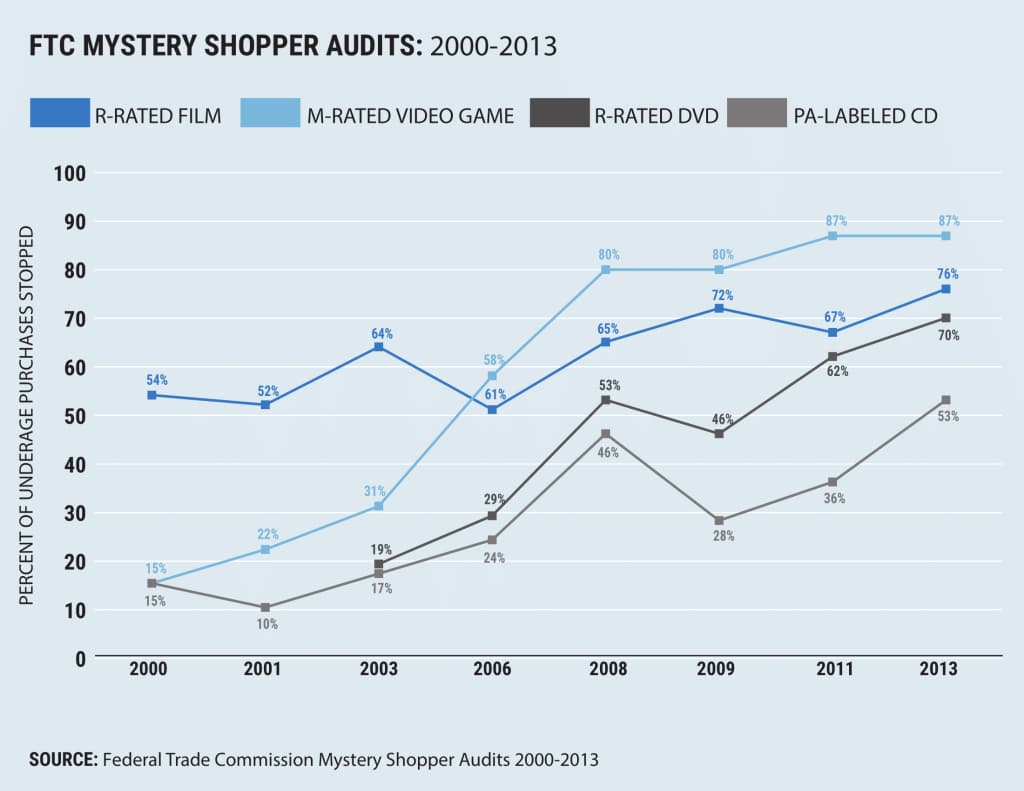
DONA FRASER (ESRB): We all took great pride when Randy would give us reports on the mystery shopper operations that the FTC would do.
During those years when Walker and Vance dramatically increased the level of retail enforcement, Dona Fraser—a lawyer who specialized in privacy protection laws—ran the ESRB’s “Privacy Online” program. Before that, she had been working in the music industry and before that…
DONA FRASER (ESRB): I left Acclaim in ’96 to go to law school. That was something I had wanted to do since high school. I knew when I started law school that I wanted to do entertainment law. I just didn’t know what area of entertainment. I ended up gravitating towards privacy for several reasons. One was that, while I was in law school, “COPPA” [the Children’s Online Privacy Protection Act] was legislated and came into law. Another reason was that, to me, privacy was the only area of law that was akin to entertainment law. Because there’s no “Internet law” per se, right? There’s no “entertainment law” per se. They’re both amalgamations of different areas of law. And that’s what I liked about it—that it was like putting a puzzle piece together. And I knew, also, that there was going to be a convergence—you can’t have the internet without entertainment and vice versa.
Under Fraser’s stewardship, ESRB’s Safe Harbor privacy program dramatically expanded; eventually—in 2013—manifesting in the creation of ESRB Privacy Certified.
DONA FRASER (ESRB): I’m extremely proud of the work we did. Not just with the program itself, but also with the messaging. Some of my biggest highlights were working with Randy on that. And, of course, with Eliot…
Eliot was Eliot Mizrachi, who ran comms for the ESRB between 2005 and 2013.
ELIOT MIZRACHI (ESRB): There was a lot of interesting transformational work that was happening around the rating system that I got to be involved in, and also in shaping the communications strategy around. That was really gratifying, to be a part of evolving the ESRB to keep pace with an evolving games industry. On the whole, I would say there were blips on the radar where there was a [communications] issue; and when that happened, we’d go through the process of evaluating a situation, making a determination and then communicating what that was. But a lot of the time that we spent, actually, was on public education and designing PSA campaigns and all that kind of stuff that was very much about empowering consumers and helping them use the tools that we were providing.
One of the things I always found most fascinating about the ESRB was how the games were rated. It was, and is, a really thoughtful set of decision-making that goes into making tough calls about the age-appropriateness of content. I mean…have you spoken to Bill and Rocco about this?
…
Read Part 6: A Conversation with Bill and Rocco (aka: “How the Sausage is Rated”) >>
The next three parts of Content Rated By: An Oral History of the ESRB include how ratings are assigned and how the ESRB created a scalable global rating solution to meet the needs of mobile app and other digital game storefronts. Part 6 will be published next week in the ESRB About section.
Blake J. Harris is the best-selling author of Console Wars: Sega, Nintendo and the Battle that Defined a Generation, which is currently being adapted for television by Legendary Entertainment.
